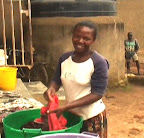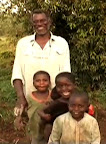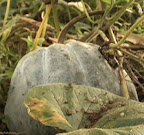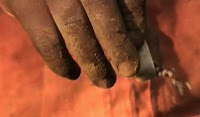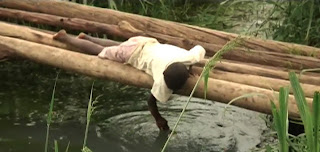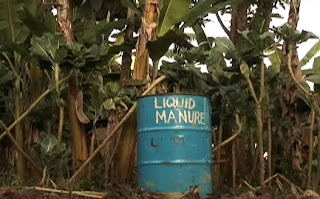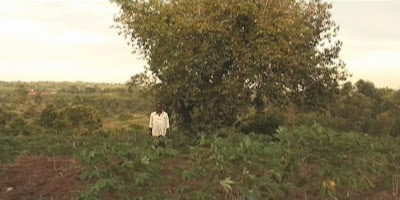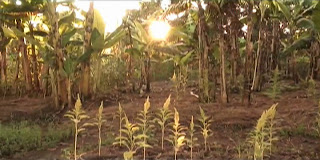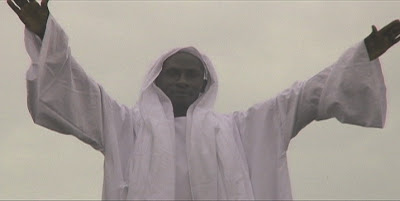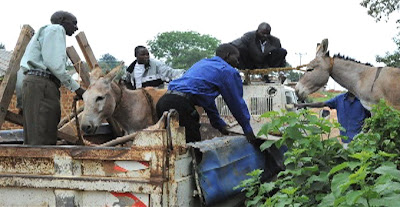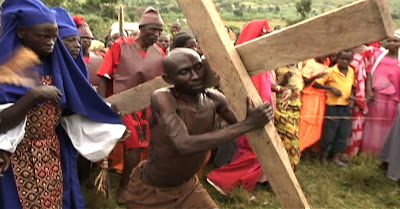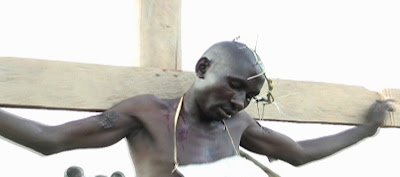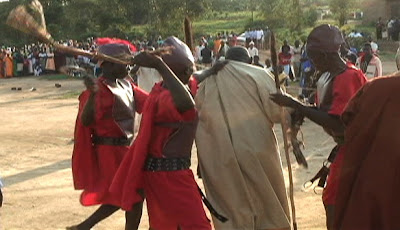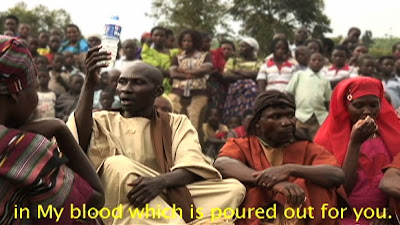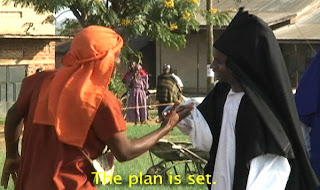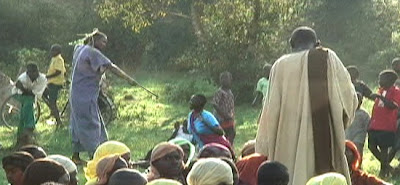Media for Social Change has made the switch to Wordpress. The new address is www.mediaforsocialchange.wordpress.com. The mediaforsocialchange.org URL still works, but traffic is now redirected to Wordpress. If you've typed in the .org URL and reached this Blogger address refresh your browser's cache.
Read more
Permaculture
Permaculture is the philosophy and practice of sustainable living. This documentary presents the ideology's 14 principles. Agricultural systems are designed to mimic Mother Nature. Subsistence farmers from Kiwangala and Lukindu Villages of Uganda illustrate the film with traditional examples of gardening, conservation, and energy cycling techniques.
The ethics of Permaculture are to care for the land, care for the people, and care for the future using these fourteen principles:
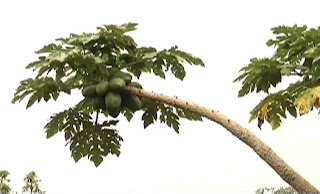 1. Diversity
1. DiversityPermaculture is a system. The more complex the natural system is the more fluid and productive it becomes. The principle of diversity is interwoven throughout Permaculture.
The most productive pieces of land lie at the edge of two different ecological zones. This is where there is the most diversity. Energy imput and output are highest in these places.
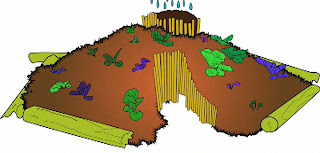 3. Energy Planning
3. Energy PlanningPermaculture is geared to the idea of working smarter, not necessarily harder. This reduces the wear and tear on the land and the people to ensure future sustenance. A kitchen garden is a good example of Permaculture design. The idea is to create an organic perpetual motion machine.
Nothing in Permaculture is wasted. One system's waste products are used to fuel another system. The feeding/fertilizer cycle is a closed circuit that wastes nothing and requires no outside assistance.
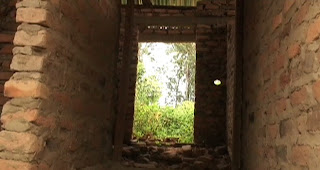 5. Scale
5. ScaleTop-heavy, overambitious planning can stunt growth rather than promoting development. Start small and build off of what already works, not just what you want to work well. Work off of strengths instead of trying to turn weaknesses into strengths.
Synthetic pesticides are expensive especially in the rural communities of the developing world. They tend to attack the problem narrowly without solving it holistically. If Permaculture is a biological system then ideally it should be maintained biologically.
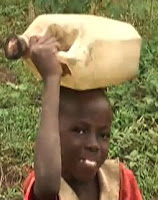
7. Multiple Elements
Be resourceful. If one part of the system breaks or disappears find ways to continue keeping the system productive. When the cap to this girl's jerrycan went missing, she created a new one out of a banana.
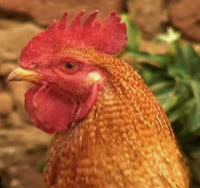
8. Multiple Functions
A chicken is more than just a chicken. Permaculture uses resources to the fullest so that its ecological participants become jacks-of-all-trades.
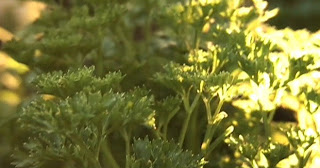 9. Natural Succession.
9. Natural Succession.Be in tune with the seasons. There's a time to plant and a time to harvest. These are dependent on wet and dry months. Predicting when the rains will come has been difficult due to recent climate change. This parsley was one of the few plants to survive a recent drought.
There's a man in Japan that is 74 years old and independently maintains 12 acres of some of the most productive farmland in the world. Areas that need the most attention should be kept close at hand. Elements that require less monitoring can be kept further away.
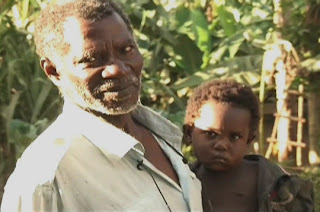 11. Personal Responsibility
11. Personal ResponsibilityPermanent agriculture sustains for generations upon generations. By planning long term for the future, you ensure through responsible management that there are always enough resources at any present moment in time.
When you interplant vegetable plants among fruit trees you are providing protective shade for young plants. The shorter plants create ground cover and discourage weed growth. It's a symbiotic relationship.
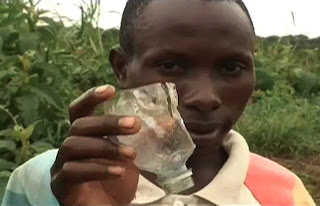 13. See Solutions Not Problems
13. See Solutions Not ProblemsDon't say, "How do I make this land do what I want it to do?" Instead say, "What can this land provide me with its unique characteristics?" Water takes the shape of whatever vessel it is poured in. How do you adapt to the environment you've been given?
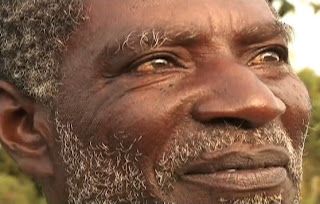
14. Observation
A Permaculturist is just as much a good naturalist. Nature is built up out of different interactions of flora and fauna. These sequences and relationships are rich with diversity. Diversity makes a system fluid and productive.
Highly productive land can be very beautiful.
________________________
_________
This was the last movie I made before leaving Uganda. It came about out of a series of workshops I presented to Peace Corps volunteers. Examples came from the permaculture projects I was working on with the farmers of Kiwangala and Lukindu villages in Masaka, Uganda.
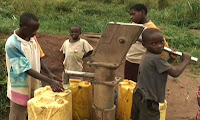 My interest in permaculture started with appropriate technologies. My Ugandan counterparts taught me how to build tippy-taps, solar driers, firewood saving stoves, and kitchen gardens. These devices are built out of necessity from locally available resources, but show signs of resourceful ingenuity in their simplicity. I became interested in food security, got involved with a demonstration farm and co-op, and drew upon my experiences to develop an agro-education curriculum for the local school. The characters featured in this documentary were my friends and neighbors.
My interest in permaculture started with appropriate technologies. My Ugandan counterparts taught me how to build tippy-taps, solar driers, firewood saving stoves, and kitchen gardens. These devices are built out of necessity from locally available resources, but show signs of resourceful ingenuity in their simplicity. I became interested in food security, got involved with a demonstration farm and co-op, and drew upon my experiences to develop an agro-education curriculum for the local school. The characters featured in this documentary were my friends and neighbors.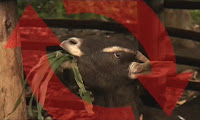 The 14 principles come from Yayasan Indonesian Development of Education and Permaculture Foundation. IDEP has an excellent permaculture manual that can be downloaded for free. In addition, Bill Mollison, the founder of permaculture, was interviewed in an insightful piece for Mother Earth News. These two sources were great inspiration to my work. The Peace Corps' philosophy of sustainable development was also a major influence.
The 14 principles come from Yayasan Indonesian Development of Education and Permaculture Foundation. IDEP has an excellent permaculture manual that can be downloaded for free. In addition, Bill Mollison, the founder of permaculture, was interviewed in an insightful piece for Mother Earth News. These two sources were great inspiration to my work. The Peace Corps' philosophy of sustainable development was also a major influence.Many ideas for this movie came together while I scribbled in my notebook under this mango tree.
Wednesday, July 7, 2010
The Revealed Truth Part 8: The Resurrection
The ascension scene returns The Revealed Truth back to the AIDS ravaged fishing village from Part 1. After wading out of Lake Victoria, I remarked to the play's producer that the footage from the play's performance of the resurrection scene didn't come out too well. We decided to reshoot the scene in the bush down the beach from the village. The actor who plays Jesus, Pr. Josham Ssewanja, kept climbing up this hill. The cast and crew had no idea what he was doing. It was all done out of improvisation. In fact you can see one of the disciples trying to persuade him to get back down. However, we got the shot and I think it turned out well.
As Ssewanja gets to the top of the mountain he raises his arms out and looks down, creating the same iconic pose as the O Cristo Redentor statue of Rio De Janeiro. Christ the Redeemer is considered to be the largest art deco statue on earth. It is 130 feet tall, weighs 700 tons, and has been voted one of the New Seven Wonders of the World.
I don't think that the Ugandan cast and crew were aware of the giant statue in Brazil, but there is a correlation with The Revealed Truth. Christ the Redeemer sits atop Corcavodo hill looking down into the favelas below. These slums are riddled with drugs and gangs and considered to be some of the most dangerous neighborhoods in the world. Both the Christ in Rio and the Messiah in The Revealed Truth are redeemers, not of sin, but of poverty.
From my experience in making this film, I've learned that Uganda has more than its fair share of destitution. Domestic violence, corruption, disease, vigilante law, and malnutrition make day to day life difficult. In an environment like that, one can only have hope that things will one day change. Christ's transcendent qualities are often the only thing that keeps people going. Organized religion is the backbone of the community.
Closely linked to the church are the faith based charities that sponsor children.
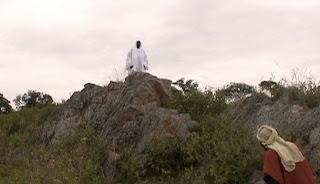 It's one way of creating redemption in rural villages, but is it beneficial for the community? Selected kids attend boarding schools in towns outside the village. When they go to University it's hours away in the capital. Those fortunate enough to pursue higher education become professionals in their careers. Yet, they are often reluctant to return to their homes after finding a better life elsewhere. That's redemption for the individual, but creates brain drain on the country. The best and brightest Ugandans don't even live in Uganda.
It's one way of creating redemption in rural villages, but is it beneficial for the community? Selected kids attend boarding schools in towns outside the village. When they go to University it's hours away in the capital. Those fortunate enough to pursue higher education become professionals in their careers. Yet, they are often reluctant to return to their homes after finding a better life elsewhere. That's redemption for the individual, but creates brain drain on the country. The best and brightest Ugandans don't even live in Uganda.Foreign intervention by itself is not a viable solution. It fosters a culture of dependency that keeps things at status quo and often creates an environment vulnerable to corruption. Today Africa must struggle with an ill-fitting Western paradigm of development. It's structured in a way that the region will be forever playing catch up to the rest of the world. The continent's redemption must come from within. Africa is a wealth of natural resources and culture. Those who were fortunate enough to get out of Africa in search of better education and jobs must make the Christ-like sacrifice to return to their former life of poverty so that they can lead their people out. Africa needs to develop itself in a uniquely African way.
I'd like to conclude The Revealed Truth blog series with a shot from the end credits. I woke up the morning of the play to find the two donkeys grazing in front of the school. As the day wore on it became clear that the the livestock needed to be transported to the performance area. The crew pulled up along side a tall hill. The donkeys were pulled on ropes up to the top. Someone took a few 2' x 4' planks from out of the truck bed and positioned them over the space between the hilltop and the pickup.
The donkeys were led single file over the gap. Led is not the best description. A few guys pulled at ropes tied at the beasts' necks. Another group pushed from behind. Some poked with sticks. I can't stress how risky it is to guide two large animals over a narrow, flimsy board over a ten foot abyss. Luckily, the donkeys made it onto the truck.
Yet, that's the way life works out in Kiwangala, Uganda. The people who live there are faced with seemingly impossible challenges. Often the only solutions are unpredictable and precarious, but everyday Ugandans take the chance anyway.
While working and living in the country I encountered a spirit of perseverance over adversity like no other. I mentioned in the introduction that making this film was difficult. It took a year just to sync the audio and figure out the subtitles. My inspiration to finish the movie came from watching the cast and crew. Seeing them balance the burden of the world on their shoulders put my work in perspective.
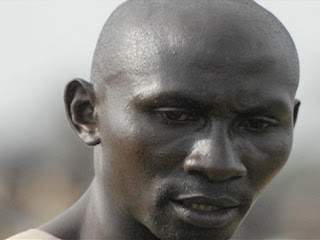 Sometimes, I'd question what I was achieving by making a movie about an African passion play. It seemed petty in light of the suffering these people are facing. What good is art if people are starving? Then one of the actors would see me working on my computer. I didn't have electricity at my house, but I would bring my laptop down the road and sit in a dusty garage that had an intermittently working outlet. The actors would come in, stand behind me, and watch me work. When they saw themselves or a friend or neighbor on the screen, even if it was just for a moment, they would erupt with excitement. They may have never seen themselves on video before, but they were eager to share their talents with an audience. It gave them a feeling of importance, a feeling that they weren't forgotten by the rest of the world, that they were more than just a third world statistic. The challenges that Sub-Saharan Africa faces doesn't boil down to economics, education, or management, but of esteem. When someone feels they are of worth they are capable of doing anything.
Sometimes, I'd question what I was achieving by making a movie about an African passion play. It seemed petty in light of the suffering these people are facing. What good is art if people are starving? Then one of the actors would see me working on my computer. I didn't have electricity at my house, but I would bring my laptop down the road and sit in a dusty garage that had an intermittently working outlet. The actors would come in, stand behind me, and watch me work. When they saw themselves or a friend or neighbor on the screen, even if it was just for a moment, they would erupt with excitement. They may have never seen themselves on video before, but they were eager to share their talents with an audience. It gave them a feeling of importance, a feeling that they weren't forgotten by the rest of the world, that they were more than just a third world statistic. The challenges that Sub-Saharan Africa faces doesn't boil down to economics, education, or management, but of esteem. When someone feels they are of worth they are capable of doing anything.I certainly can't formulate a solution for all of Africa's problems in this closing paragraph, but I believe that media has a part to play. Awareness and advocacy comes from good communication. Giving the voiceless a voice is the first step in creating equality on the planet. These are ideas that I've explored in past posts and that I will continue to develop in future blog entries.
The Revealed Truth Blog Series
This is the final post of a nine part series that takes an in-depth look at the The Revealed Truth and how rural Ugandan culture influenced the making of the film. The movie is about an hour long but I've broken it down into 5 to 10 minute blog-size episodes. If you are reading about The Revealed Truth for the first time, the best place start is the introductory post.
The previous post was The Crucifixion.
Wednesday, June 23, 2010
The Reveal Truth Part 7: The Crucifixion
The play stopped being a play and started to feel real. The crowd began to participate. Some cheered on the soldiers. Others were shocked to see the flogged Jesus covered in pig blood. The crown of thorns were real and cut into the actor’s forehead. The men’s wrists and ankles were tied quickly and efficiently to the crosses and raised up against the setting sun. The storyline faded and the ritual of religion remained. Jesus represents humankind's suffering and these people have been through a lot. The villagers throw all their afflictions, sins, and prayers upon Him.
On the front panels of the Mathais Grunwald's Isenheim Altarpiece is a rendering of the crucifixion. The triptych is one of the more gruesome depictions of the event. Jesus hangs from the cross at the moment of death. His body is poxed with sores and stiff from rigor mortis. A rag is tied around His legs.
The altarpiece was created for a hospital chapel at the time of the plague and the scene was grotesquely familiar to the church’s congregation. It was also a reminder to adhere to Christian values in times of Hell. The Revealed Truth shares this message. Jesus sat on a cross in the playground in Kiwangala, Uganda that day and reflected the plight of the vilage's people. He hung emaciated and naked in a town ravaged by war and disease.
Art tailors its content to attract an audience. The past and its traditions can enlighten our present conditions. Today's martyr in the geopolitical world is Africa. Its people and environment have been exploited and left impovrished by country's thousands of miles away. The autrocities that occur in Africa are forgotten and ignored by the Western media. Only when Angelina Jolie comes for the afternoon to save Darfur or adopt a new Namibian does the world pay attention.
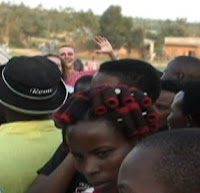 As the camera pans from cavalry to the audience, two white teenage boys with a camcorder gleefully wave from the back of the crowd. They are volunteers from the UK on their gap year abroad. The boys taught math, english, and science at my school to students who were older than they were They stick out on the screen like a page from Where’s Waldo. Their presence in the movie is like a surprise sasquatch sighting. They are the latest manifestation of British involvement in Uganda. They've come to Uganda more for their personal developmet than to follow in the footsteps of their missionary grandfathers.
As the camera pans from cavalry to the audience, two white teenage boys with a camcorder gleefully wave from the back of the crowd. They are volunteers from the UK on their gap year abroad. The boys taught math, english, and science at my school to students who were older than they were They stick out on the screen like a page from Where’s Waldo. Their presence in the movie is like a surprise sasquatch sighting. They are the latest manifestation of British involvement in Uganda. They've come to Uganda more for their personal developmet than to follow in the footsteps of their missionary grandfathers. The boys had just turned eighteen and this was their first experience away from home. It was as if they had been magically transported from the safety of their parents into the Lord of the Flies. Before they left, their microwave skills were competent at best. In Uganda they were given a pile of charcoal, matches, and little direction. Yet, as ambassadors of the newest generation they provide a glimmer of hope. They, and the thousands of other voluntourists like them, came back from their experience in Uganda with stories to tell the friends and family who never left. The horizon is broadened. The West becomes more conscious about how its choices effect the balancing act of sustaining the planet. Africa still has difficulty feeding, clothing, and vaccinating itself. However, as it becomes more accessible to visitors, global ignorance towards the continent will to break down. It still needs a miracle, but that's a start.
The Revealed Truth Blog Series
This post is the eighth of a nine part series that takes an in-depth look at the The Revealed Truth and how rural Ugandan culture influenced the making of the film. The movie is about an hour long but I've broken it down into 5 to 10 minute blog-size episodes. The final post will feature the Resurrection.
The previous post was The Revealed Truth Part 6: Mob Justice.
Monday, June 21, 2010
The Revealed Truth Part 6: Mob Justice
I wanted to give the garden scene a little character so I added some flowers and a monkey. A Dutch carpenter named Wilfred did the primate sound effects. I saw two monkeys in Kiwangala. One was stealing a banana from a plantation. The other time was when I got lost riding my bike in the deep village. I passed a pet monkey tied with a rope to a dead tree.
 Other areas of Uganda are more plentiful. There are big primates like chimps, baboons, and mountain gorillas in the West, but the country is awash with vervet monkeys even in some of the suburbs. This monkey was photographed at the Entebbe Botanical Gardens. They have a big troupe there and not all appreciate snapshots. This monkey had a swipe at me. The botanical gardens were a savage place. I went on Easter weekend and watched a family enter the park and slaughter a goat.
Other areas of Uganda are more plentiful. There are big primates like chimps, baboons, and mountain gorillas in the West, but the country is awash with vervet monkeys even in some of the suburbs. This monkey was photographed at the Entebbe Botanical Gardens. They have a big troupe there and not all appreciate snapshots. This monkey had a swipe at me. The botanical gardens were a savage place. I went on Easter weekend and watched a family enter the park and slaughter a goat.Laws in rural Uganda are on par with the wild American West of the 1800s. Anything goes. Laws that are broken are difficult to enforce. Police are poorly paid and this makes them corrupt. Cash can pay off any offense. There are times in Uganda that call for vigilante mob justice. I was in a taxi from Luweero when a tractor trailer from the D.R.C. hit a road construction worker further up. I witnessed the workers torched the truck as we passed them on the road. The driver and his teenage passenger made a run for it. The kid was captured and beaten to a pulp. The driver was being prepared to be lynched when the police caught up with him. My friend was in another matatu behind me and tells me that one of the workers threw a pickaxe at their back window.
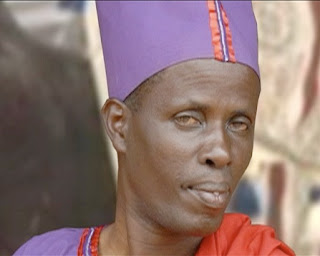 On the nights that I didn't want to mess with cooking under candlelight and a flashlight, I'd walk into the trading center for a rolex. Far from being a luxury item, a rolex is an omelet rolled up in chipatti, a greasy Indian flatbread, with shredded cabbage and tomatoes. My pal Junior cooked me up many a rolex and we got to be friends. I used to bring him jalapenos and avocados that I grew to throw in the mix.
On the nights that I didn't want to mess with cooking under candlelight and a flashlight, I'd walk into the trading center for a rolex. Far from being a luxury item, a rolex is an omelet rolled up in chipatti, a greasy Indian flatbread, with shredded cabbage and tomatoes. My pal Junior cooked me up many a rolex and we got to be friends. I used to bring him jalapenos and avocados that I grew to throw in the mix.One day Junior was gone. The night before he was accused of stealing a cell phone. A mob of townspeople grew up out of nowhere, beat him beyond recognition, and then drove him out of town. I never saw him again.
The soldiers who flog Jesus all the way to the authorities are acting out of what they've seen from experience. Justice comes swiftly and harshly in the village. It's at this point that the energy of the audience at the play's performance perks up and a crowd grows more excitable as Jesus completes each station of the cross.
The Revealed Truth Blog Series
This post is the sixth of a nine part series that takes an in-depth look at the The Revealed Truth and how rural Ugandan culture influenced the making of the film. The movie is about an hour long but I've broken it down into 5 to 10 minute blog-size episodes. The next post will feature Jesus's arrest.
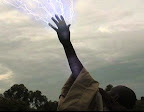
The previous post was The Revealed Truth Part 5: The Last Supper.
Sunday, June 20, 2010
The Revealed Truth Part 5: The Last Supper
All of the actors in the Lazarus scene come from families that have been directly affected by the AIDS virus. In fact, no family has been able to escape the disease in Kiwangala. Funerals are held in the village on a weekly basis. It sounds grim, but Ugandans have told me time and again that they are making progress in fighting the disease and thing are getting better. In the past someone infected would be dead in a month. Nowadays, antiretroviral drugs, or ARVs, can keep someone alive for years. The phenomenon is called the Lazarus effect. I met one woman who had been HIV positive for 15 years and still led a healthy and productive life.
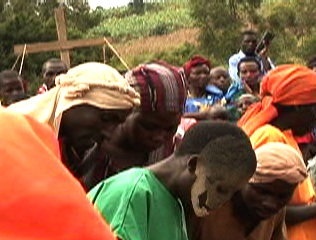 The problem of the epidemic now is the false sense of security individuals get from believing that the disease has become benign. Young people think that if they get infected they can just take ARVs. This has led to an increase in risky sexual behaviors and infection rates are now back on the rise. On top of that, HIV/AIDS therapy is heavily subsidized by foreign aid. One of the biggest players in Uganda has been the American government's P.E.P.F.A.R. The President's Emergency Plan For AIDS Relief is a $63 billion worldwide initiative started by President Bush. However, while the epidemic is still growing in Uganda, a cap has been put on P.E.P.F.A.R. funds and doctor's are now forced to send away patients. This is compounded by the hesitancy of private donors to give more in the economic recession and local corruption. If things continue this way the battle against AIDS in Uganda could become one step forward and two steps back.
The problem of the epidemic now is the false sense of security individuals get from believing that the disease has become benign. Young people think that if they get infected they can just take ARVs. This has led to an increase in risky sexual behaviors and infection rates are now back on the rise. On top of that, HIV/AIDS therapy is heavily subsidized by foreign aid. One of the biggest players in Uganda has been the American government's P.E.P.F.A.R. The President's Emergency Plan For AIDS Relief is a $63 billion worldwide initiative started by President Bush. However, while the epidemic is still growing in Uganda, a cap has been put on P.E.P.F.A.R. funds and doctor's are now forced to send away patients. This is compounded by the hesitancy of private donors to give more in the economic recession and local corruption. If things continue this way the battle against AIDS in Uganda could become one step forward and two steps back.On a lighter note, we come to the most exotic element in The Revealed Truth: the donkeys. The entire time I was in Uganda I saw just one horse. I've never figured out why there are so few there. It could be that there were never any wild horses in Africa, but they weren't in North America either and here they've flourished. I thought for sure that the British would bring some equines along with them to build their colonies. Maybe it has something to do with the equatorial tropical environment of the or that Uganda's such a small country that there's no need to travel long distances. Who knows. They're just not here.
 The play's were striving for authenticity and imported these donkeys from Kampala. They became a spectacle in the village and drew a crowd even before the play started. People would gather around and shriek in awe at the sight of the beasts. It's was like when we go to the zoo in America and see the elephants for the first time. One woman asked if I feared the animals. I told her no. Then she asked me if I eat them in my country. I played the part of a good ambassador and replied in the negative. I didn't want to go into what goes on at the Jello factory. I do know that they eat donkey in other parts of Africa. I discovered that at an all you can eat Ethiopian restaurant in Kampala when I asked the waiter about the mystery meat at the buffet. Fish and grasshoppers aside, I don't care to eat meat so I can't give a review on the taste of donkey, but I can tell you that it looked a lot like ground beef.
The play's were striving for authenticity and imported these donkeys from Kampala. They became a spectacle in the village and drew a crowd even before the play started. People would gather around and shriek in awe at the sight of the beasts. It's was like when we go to the zoo in America and see the elephants for the first time. One woman asked if I feared the animals. I told her no. Then she asked me if I eat them in my country. I played the part of a good ambassador and replied in the negative. I didn't want to go into what goes on at the Jello factory. I do know that they eat donkey in other parts of Africa. I discovered that at an all you can eat Ethiopian restaurant in Kampala when I asked the waiter about the mystery meat at the buffet. Fish and grasshoppers aside, I don't care to eat meat so I can't give a review on the taste of donkey, but I can tell you that it looked a lot like ground beef.Speaking of strange dinners, we've finally come upon one of the strangest Last Suppers I've seen. It's also one of my favorites because of it's unintended humbleness. Like Veronese's Feast in the House of Levi mentioned in the introductory post of this series, this Last Supper has a carnival atmosphere. Jesus can hardly be heard over the whirr of the generator, squaking of the intercom, and snickering of the crowd. The disciples dig into a bag of bread. Ugandan bread is bland probably has the same consistency of the unleavened bread that was broken at the original Last Supper.
Instead of a chalice of wine, Jesus passes around an old plastic bottle of Rwenzori brand drinking water. This could be a message of temperance. The Born Again churches that I worked with didn't drink alcohol. Maybe the director of the play was trying to downplay an mention of wine whatsoever. The reason for this prohibition also might have something to do with Uganda being the number one consumer of alcohol per capita in the world. Bars are open twenty four hours and local brew is potent and plentiful. Vodka is served doubleshot size in a plastic baggie and costs about a 30 cents each. I've seen old men drunk in the street at 8AM and a two year old throwing a tantrum until his mother soothed him with a bottle of waragie. There's reason to be afraid of liquor. I once asked a girl from the church out to a neighborhood housewarming party. She declined telling me that she doesn't go to discos. There would be drinking and even dancing there. It was the equivalent of "Sorry, I'm washing my hair tonight".
The Revealed Truth Blog Series
This post is the sixth of a nine part series that takes an in-depth look at the The Revealed Truth and how rural Ugandan culture influenced the making of the film. The movie is about an hour long but I've broken it down into 5 to 10 minute blog-size episodes. The next post will feature Jesus's arrest.
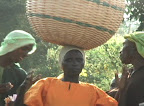
The previous post was The Revealed Truth Part 4: Let The Little Children Come to Me.
Saturday, June 19, 2010
The Revealed Truth Part 4: Let the Little Children Come to Me
This chapter of The Revealed Truth opens up with some classic bargaining by Judas. Ugandans love to make a deal. Judas may seem overacting here, but I would get just as expressive trying to buy passion fruit from the neighborhood bodega or setting the price for a taxi. When you're in the mood, you can get some really great deals. If you're tired and just want to make the sale, the vendors will rip you to shreds. Most commodities don't come with a set price. The vendor will begin by sizing up the consumer. As I was a Muzungu (white man) the seller immediately inferred that I was also an Omugagga (rich man). Prices start on the astronomically high side. I'd counter with something ridiculously low and hopefully we'd meet somewhere in the middle. If all else fails, turning your back in the middle of the transaction can get you a dramatic discount. Bargaining is true capitalism because each transaction reevaluates the product's supply and demand. Switching to English during a deal will automatically chalk up a muzungu tax.
As Jesus figures out how He's going to feed the masses with two loaves of bread there is a disturbance in the background. One of the shepherds chases the neighborhood kids around and swats at them with a stick. The shepherd also doubled as the play's enforcer of crowd control. If a child got too close to Jesus or the disciples he would beat them. It provides some real life foreshadowing of Jesus's Let the Little Children Come to Me sermon, but nobody watching the performance seemed concerned about the violence.
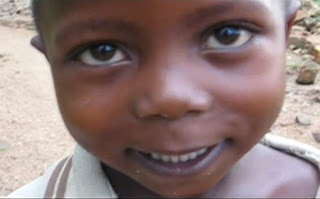 While Uganda's youth empowerment agenda looks very progressive on the books, it's not practiced. Corporal punishment is illegal, but I saw students at the school caned many times. When I ran into a teacher flogging a kid I'd go into shock and just stand there. The teacher usually would look up, see me, get embarrassed,and take a break until I left. Most headmasters will publicly acknowledge that child abuse is wrong and bad for donor relations. However, when faced with the choice to stop they don't know an alternative. The issue runs deeper than discipline. In one study 98% of the Ugandan children interviewed experienced physical or emotional violence at home. In the hierarchy of society children are one peg above animals because they have better motor skills. It's a utilitarian mindset. Children are valued because they can work. There are no microwaves or washing machines, but there are lots of kids. Many students attending my school were from child-headed households and had no parents to advocate on their behalf. The education was free, but many days out of the week their classes took place out in the fields where they were "learning" to dig trenches or clear brush.
While Uganda's youth empowerment agenda looks very progressive on the books, it's not practiced. Corporal punishment is illegal, but I saw students at the school caned many times. When I ran into a teacher flogging a kid I'd go into shock and just stand there. The teacher usually would look up, see me, get embarrassed,and take a break until I left. Most headmasters will publicly acknowledge that child abuse is wrong and bad for donor relations. However, when faced with the choice to stop they don't know an alternative. The issue runs deeper than discipline. In one study 98% of the Ugandan children interviewed experienced physical or emotional violence at home. In the hierarchy of society children are one peg above animals because they have better motor skills. It's a utilitarian mindset. Children are valued because they can work. There are no microwaves or washing machines, but there are lots of kids. Many students attending my school were from child-headed households and had no parents to advocate on their behalf. The education was free, but many days out of the week their classes took place out in the fields where they were "learning" to dig trenches or clear brush. America is on the other end of the spectrum. We put our children on a pedestal. We spoil kids and make them whine from overindulgence. The youth culture fuels our economy with the music, movies, and media that makes our country famous. Yet, all expenses are paid with a parent's credit card. Most American children under 12 years aren't their family's breadwinners. We have child labor laws against that. In Uganda, if a child doesn't bring home they don't eat.
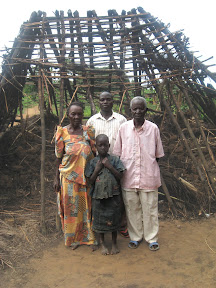
 Perseverance of families in this environment is amazing. Despite the prevalence of abuse, strong family bonds are the key to survival. Take Julius, the actor who plays the prodigal son. He was in his mid twenties and living with his parents. He wasn't a deadbeat sleeping on the couch, but working side by side with his parents and sister on the farm. During the month of the play's performance his family's home collapsed. Subsistence farmers don't have home insurance but Julius helped his aging father salvage what he could and they built the structure over again. There is a loyalty to family, clan, and tribe in Uganda that is not found in the West. In such an impoverished country there are very few street gangs. The communal nature of the village doesn't allow them to form. Even if a child's parents weren't in the picture, their aunts, uncles, and grand parents were around to provide a support system.
Perseverance of families in this environment is amazing. Despite the prevalence of abuse, strong family bonds are the key to survival. Take Julius, the actor who plays the prodigal son. He was in his mid twenties and living with his parents. He wasn't a deadbeat sleeping on the couch, but working side by side with his parents and sister on the farm. During the month of the play's performance his family's home collapsed. Subsistence farmers don't have home insurance but Julius helped his aging father salvage what he could and they built the structure over again. There is a loyalty to family, clan, and tribe in Uganda that is not found in the West. In such an impoverished country there are very few street gangs. The communal nature of the village doesn't allow them to form. Even if a child's parents weren't in the picture, their aunts, uncles, and grand parents were around to provide a support system.The Revealed Truth Blog Series
This post is the fifth of a nine part series that takes an in-depth look at the The Revealed Truth and how rural Ugandan culture influenced the making of the film. The movie is about an hour long but I've broken it down into 5 to 10 minute blog-size episodes. The next post will feature the Last Supper.

The previous post was The Revealed Truth Part 3: Good Samaritans.
Subscribe to:
Comments (Atom)
